By Caroline Cox
From a bird’s-eye view, the BeltLine Lantern Parade looks like a stream of rainbow-colored lights flowing for miles down the Eastside Trail. Up close, these lights transform into individual lanterns, sculptures of personal expression that bounce to the sounds of live marching bands while the glowing faces of participants and spectators revel in one of the largest participatory art events in the country. For over three hours, children, friends and loved ones carry glowing, handmade lanterns of all shapes and sizes in an awe-inspiring spectacle of community pride.
Today, the parade is an annual tradition for Atlanta artists and families – attracting nearly 60,000 people this year – but it wasn’t always this way. In 2010, the first Atlanta BeltLine Lantern Parade consisted of just a few hundred participants and virtually no spectators. The small crowd enthusiastically marched along what is now the Atlanta BeltLine’s Eastside Trail — which, at the time, was merely a poorly lit strip of gravel, a former railroad path overgrown with weeds and littered with trash.
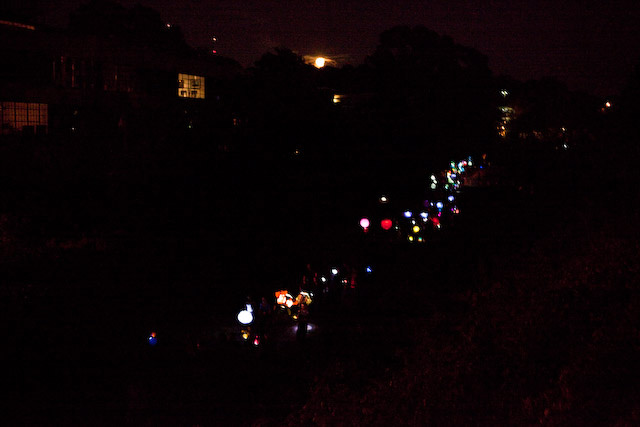
To understand how the Lantern Parade has evolved, it’s important to understand where it started. The creative force behind this magical spectacle is Chantelle Rytter, a Baltimore native and Penn State grad with a passion for using arts to bring people and communities together.
Rytter’s passion and whip-smart demeanor comes across within minutes of speaking with her. Prior to moving to Atlanta, she spent a decade in New Orleans, immersing herself in its arts scene and, particularly, the vibrant brass-band parade culture that helps define civic life in the Big Easy.
Inspired by what she saw, Rytter and her friends formed a parade group called the Krewe of Grateful Gluttons in 1999 while still in New Orleans. The Krewe’s name comes from “the sense that life is a banquet,” says Rytter. “The Krewe Creed is 1) Try everything. 2) Have seconds. And 3) Say thank you.” The beauty of the Krewe lies in their unlikeliness. They are not artists, puppeteers or musicians, says Rytter. They are “just regular people”: a chef, a real estate agent, a waitress, a salesman, an engineer, a hairstylist, a designer, and a programmer.
This perfect team had only one problem: while Rytter lived in New Orleans, the rest of the Krewe lived in Atlanta, 500 miles away. But after many long drives between Atlanta and NOLA, the Krewe finally persuaded Rytter to move to Atlanta in 2001, where they immediately began spreading their brand of quirky parade culture.
The Krewe made their Atlanta debut in the very first Little Five Points Halloween Parade and quickly became known for their signature 10-foot-tall skeleton puppets. They became a fixture in the Halloween Parade and other neighborhood-specific festivals, but Rytter saw the potential for so much more.
“A parade transforms our public space in a way that, even though it's the same space that you walk by to go to work every day, it becomes a magical environment,” she explains. “When you lay down joyful, shared memories together in a place, it's a blessing on that place.”
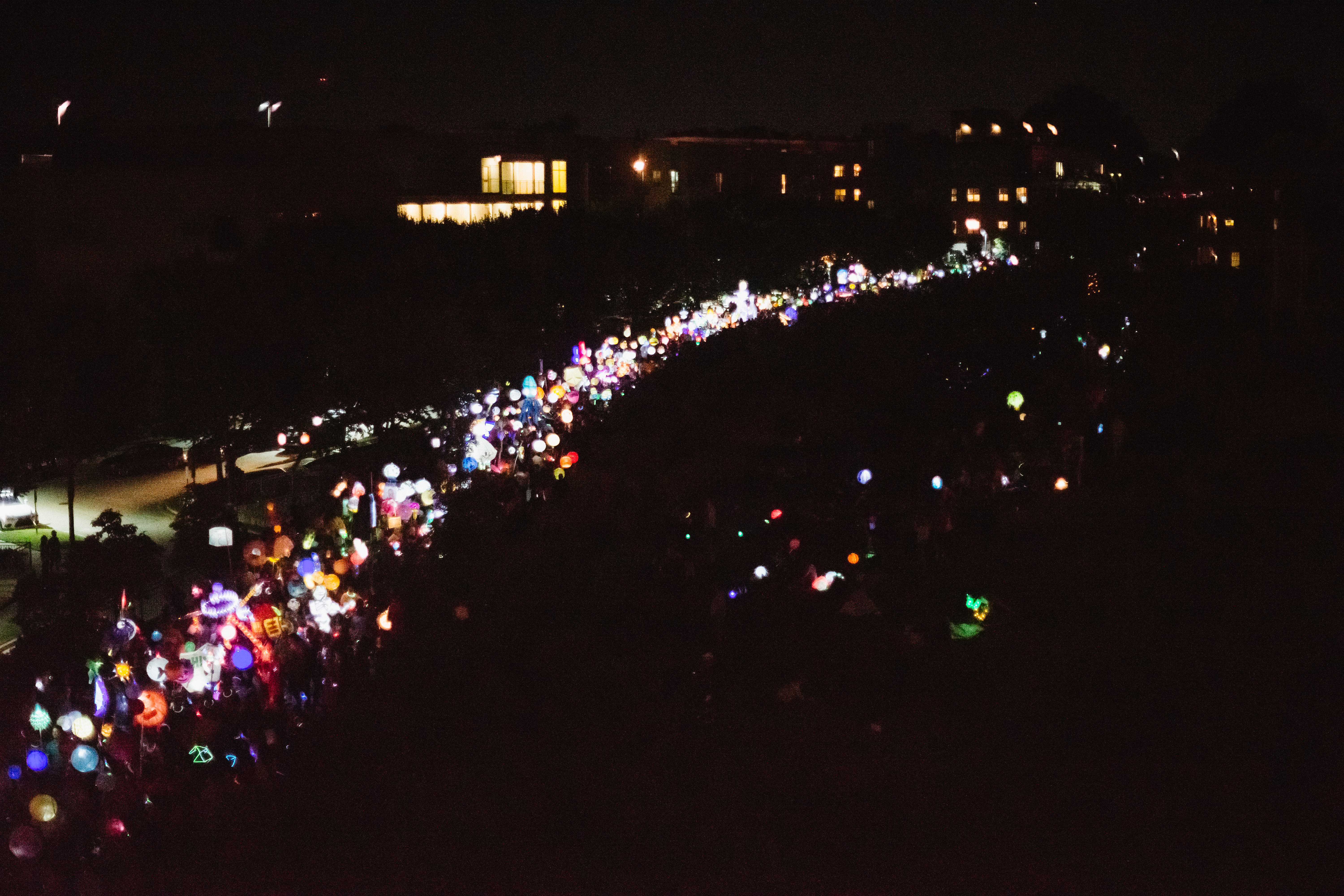
In 2010, the opportunity arose when Art on the BeltLine – a juried, public art exhibition that awards grants – put out their first call for proposals for art installations, performances and murals along the still under-construction Atlanta BeltLine.
Rytter submitted her idea for a lantern parade hosted by the Krewe, and it was accepted. At the time, there was no nighttime parade happening in Atlanta. In New Orleans, Rytter had experienced firsthand just how enchanting it is to see illuminated floats shaped like fire-breathing dragons and majestic birds floating along a parade route, and she knew she could capture that magic here. “I immediately said, ‘Can I do it at night?’ They got back to me and said, ‘Yeah, you can do it at night,’” she explains. “It was crazy because it was already creepy back there during the day — in 2010, the BeltLine was practically a dirt road behind dumpsters.” Unfavorable environs aside, as captain of the Krewe, Rytter resolved to put on a show. Though only 400 or so attendees showed up (“if you count the dogs”), she says everyone had a great time, and “we knew we had something special.”
The following year, Rytter applied for the grant again and became a recipient for the second time. Then in 2013, the fourth year of hosting the Lantern Parade, she convinced the BeltLine’s leaders to make the parade a permanent, annual and integral part of the BeltLine itself. It helped that, by that time, it had reached more than 10,000 spectators and attendees, evolving into a bona fide city tradition in its own right. “I wanted people to think of it just like Christmas: there's no question that it's coming around,” says Rytter. “You know when it is — you can count on it and look forward to it.”
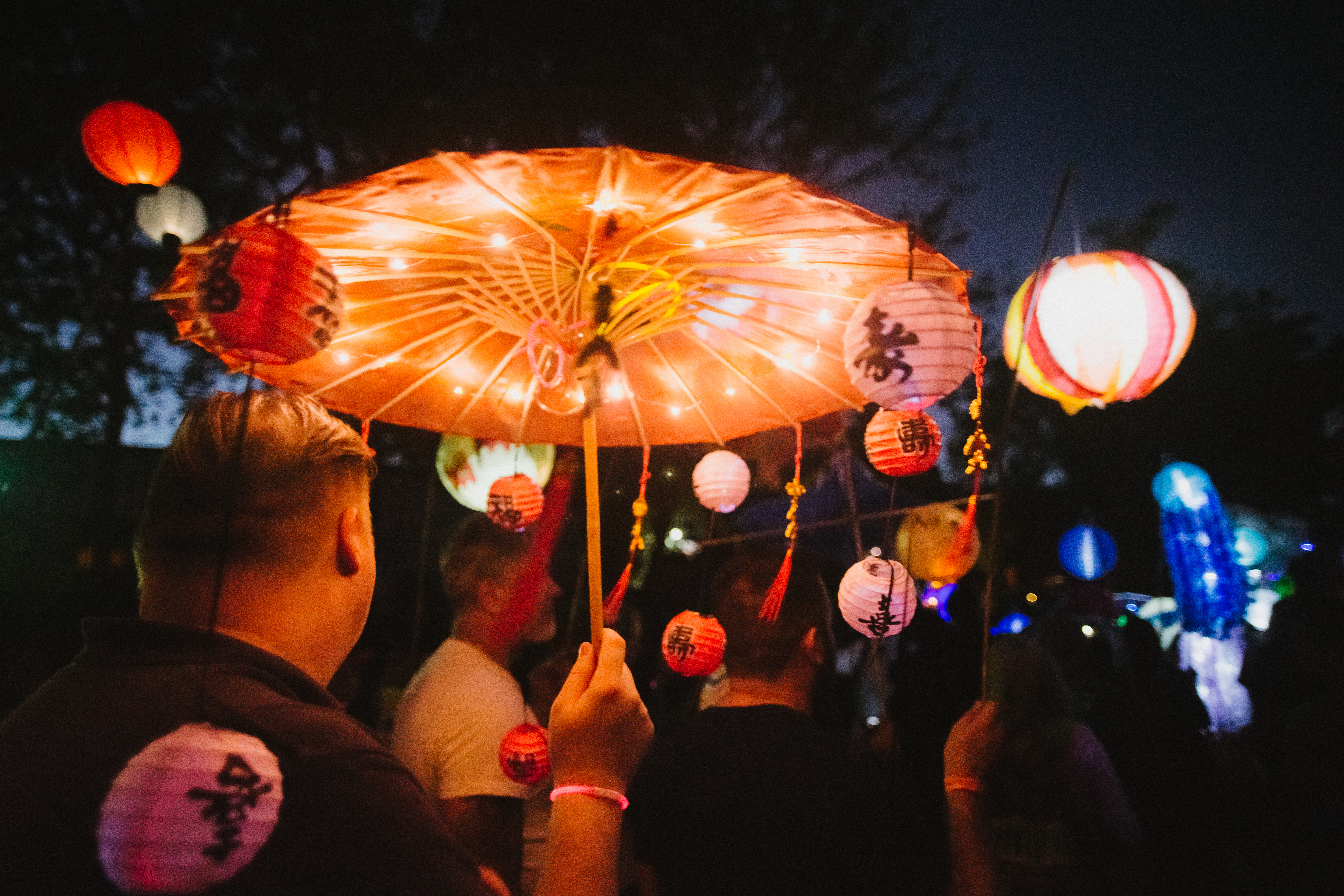
Another aspect of Rytter’s vision involved the creation of lantern-making workshops. Over the years, she’s developed her own tips and tricks for successful lantern-making. The workshops allow locals outside of her Krewe to participate and contribute to the event as well. This includes lantern hats, bamboo lantern forms and globe lanterns comprised of materials like colored tissue paper, pages of old books, LED tap lights, a few kinds of tape and flexible sticks for holding the lanterns up for all to see. Local companies and organizations, such as Southern Company and the Metro Atlanta Chamber, have booked Rytter to teach their own private lantern-making workshops.
For the Krewe, creating a unique lantern for each year’s parade is a tradition. “I try to add a new feature lantern from the Krewe every year, and keep up the collection of feature lanterns that we have,” said Rytter. “I see the big lanterns as signatures — like they're old friends that you get to see once a year on the street. They can get a new head or a new outfit, but I always want them to be there.” She uses some of the workshops as opportunities to perform maintenance on lanterns that have been beat up in multiple parade appearances.
While the inaugural parade featured about 400 attendees who walked the two-mile path — reportedly the largest number of people to ever stand together on the BeltLine at one time – by 2011, the Krewe hosted four lantern-making workshops that brought out 500 people and coincided with the opening of the Old Fourth Ward Park. By 2012, a sizeable buzz had begun surrounding the parade. The Krewe hosted six lantern-making workshops, and approximately 1,250 participants and spectators showed up to witness the spectacle. In 2013, the parade was given a permanent date, the Saturday after Labor Day. Attendance grew exponentially to about 14,000 people, and it became the official kick-off of the Art on the BeltLine season.
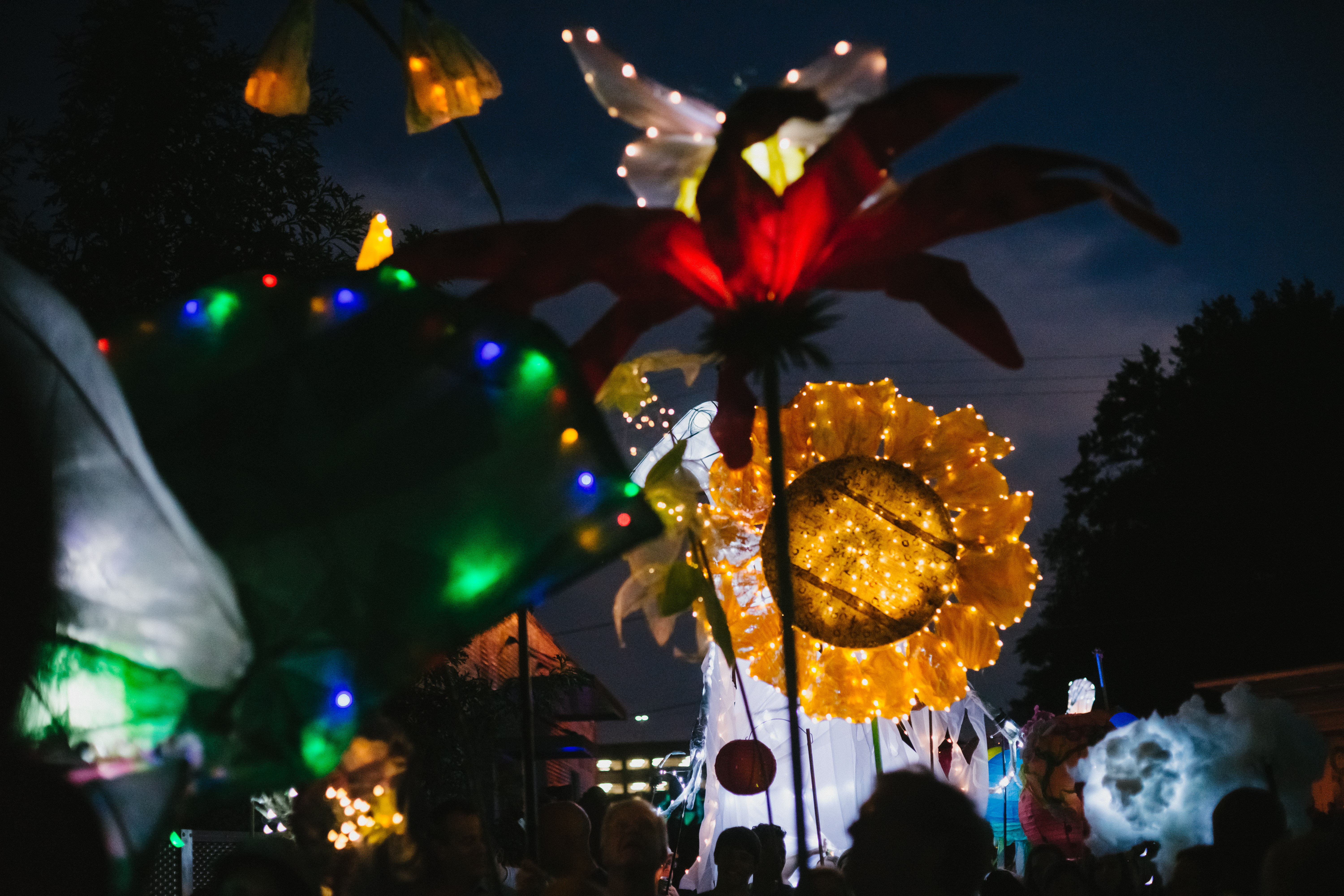
In 2014, the official ribbon cutting for the Eastside Trail took place, and the vision of the BeltLine that Atlantans had been hearing about for years began to really take shape. Rytter and her Krewe hosted 30 sold-out lantern workshops. Multiple bands became part of the lineup, and attendance swelled to 23,000. By 2015, there was a definite pattern of returning locals who had made lantern-making part of their family tradition. The Krewe hosted dozens of workshops in a space donated by Ponce City Market, attendance reached a whopping 60,000, and the event’s place in Atlanta history couldn’t be denied.
“No one does stuff like this,” says Rytter. “No one is having a second-line parade at night where everyone is invited to make a lantern and just jump in. You don’t need to join a club or register or even be on time. As an individual, you can rock this out. I love that about it.”
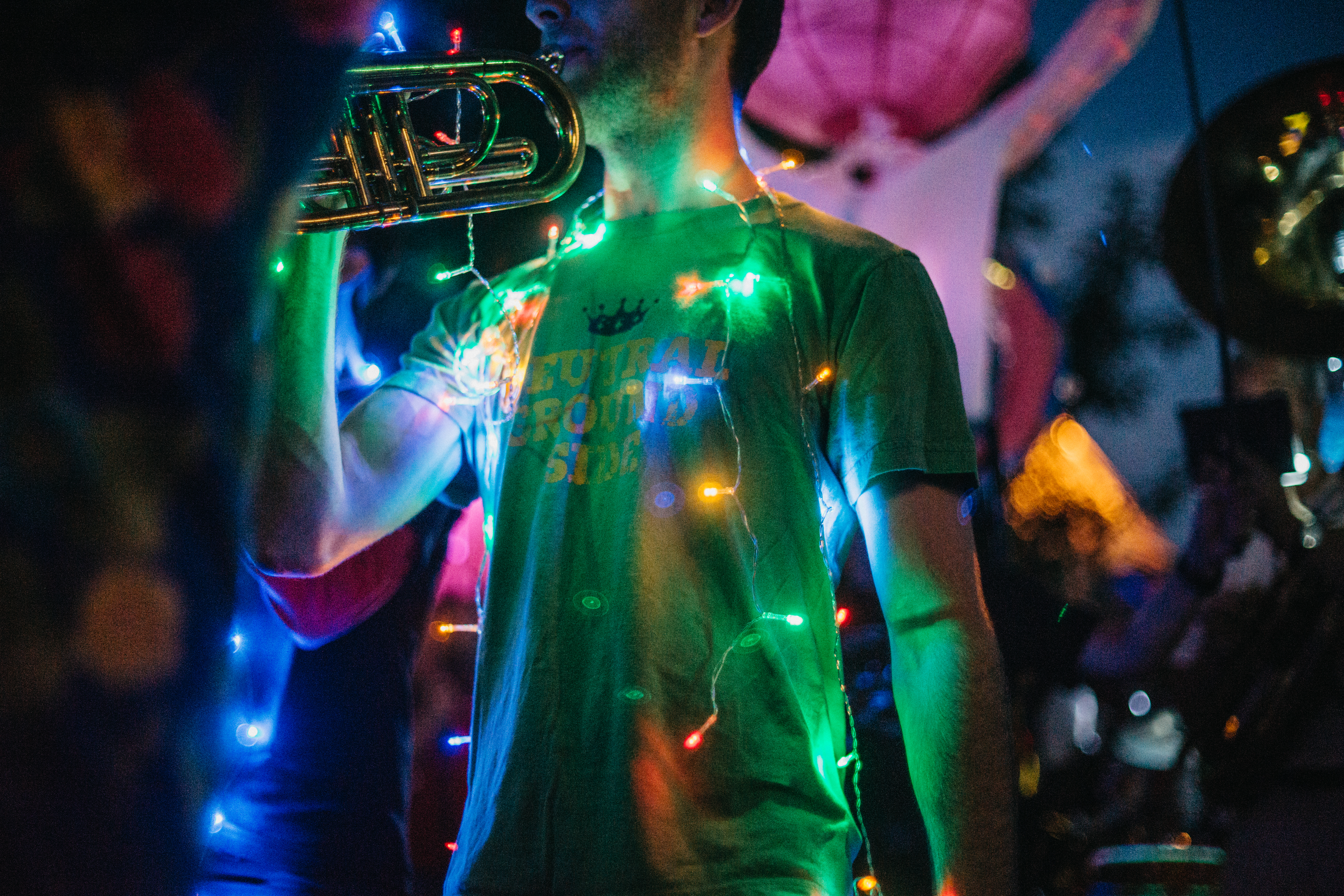
As the man responsible for what the Atlanta BeltLine is today and what it will become tomorrow, Ryan Gravel is likewise in awe of how the Lantern Parade has brought the community together. The idea for the 22-mile loop of green space was Gravel’s Georgia Tech graduate thesis back in 1999 — the same year that Rytter originally formed the Krewe in New Orleans. Today, they’ve helped grow each other’s dreams into reality. “She is my hero,” Gravel says of Rytter. “The first year, the trail wasn't even built, and we were just walking down the old railroad tracks in the dark — it was pretty great,” he explains. “It was just a couple hundred people, but I thought it was really cool. I never imagined it would grow to what it is today.”
Gravel says the exponential growth of the parade illustrates how hungry Atlantans are for pieces of culture that we’ve cultivated and made uniquely our own — and he hopes to see more ideas of its kind in the future. ”The beautiful thing about the Lantern Parade is that it's free, it's family-oriented, it's easy and it's unusual. People just get out and get to see their city come alive,” he adds. “For me, it's exciting to think about what it means and what else we might do.” For this past parade, Gravel walked behind his children, ages 8 and 11, for the length of the festivities, reflecting on how it’s shaping generations to come. ”It's cool to think that that's what their expectation is for Atlanta: that Atlanta is the kind of place where we have lantern parades with over 60 or 80,000 people,” he explains. “It's just very different from when I grew up.”
While Gravel acknowledges that, at the end of the day, the BeltLine is just infrastructure, the ways in which it inspires people to use it are what make the project truly come alive. So, how exactly did Rytter do it? “People ask me all the time how I got that many people to come and how I did it, but I'm not sure that I did it,” she says. “I had a good idea, but I think creative expression is a natural proclivity. There aren't very many creative outlets that are just free-spirited and that bring the community together in this way. I think it's a really natural thing that people want to do, and I just gave them a platform for it.”
ChooseATL: Chantelle Rytter, Founder of the Atlanta Beltline Lantern Parade.